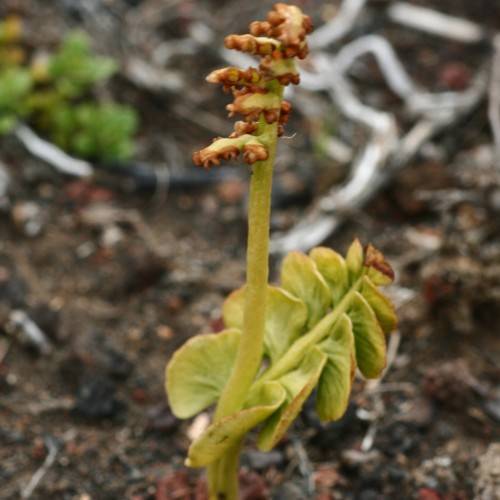
Swamp Moonwort
Botrychium tenebrosum
Watering:
Minimum
Hardiness Zone:
Sun:
part shade,full shade
Leaf:
Yes
Growth Rate:
Low
watering
Least Moonwort (Botrychium simplex var. simplex) should be watered in moderation. Water the plant lightly 1 or 2 times per month in the spring and summer months, but reduce watering in the winter months as the plant enters its dormant phase. A general rule of thumb is to water when the top 2 inches of soil feel dry. Be sure to remove any excess water and do not allow the plant to sit in soggy soil for an extended period of time.
sunlight
Least Moonwort prefers partial shade to full sun and, as such, should receive a minimum of 3-4 hours of direct sunlight each day. It should never be exposed to more than 8 hours of direct sunlight in a single day as this can cause the plant stress. For best results, a mid-morning to mid-afternoon sun is best for this particular species. It should be noted that this species is most tolerant of deep shade and may suffer in full sun; err on the side of caution and provide a light shade if conditions allow.
pruning
Least Moonwort (Botrychium simplex var. simplex) should be lightly pruned in late summer or early fall, right after the plants finish flowering and the foliage begins to fade. Overly aggressive pruning should be avoided, as this plant species tends to form a tight clump, so it is better to merely snip off the faded flower heads and yellowing leaves along with pruning any dead stems. When cutting back, it is best to stop just above a leaf or healthy bud, so as not to leave an open wound on the stems. Pruning should be done cautiously, as this plant species is a very fragile fern and is quick to go dormant.
